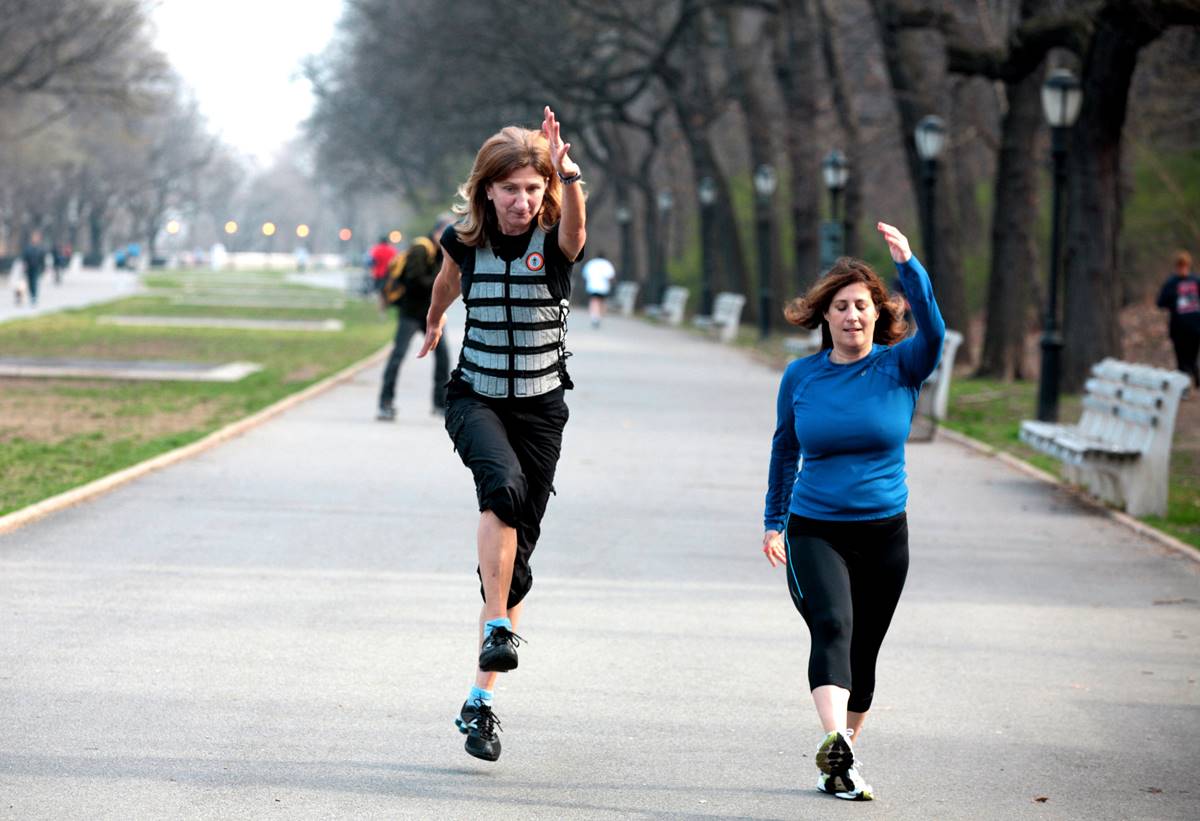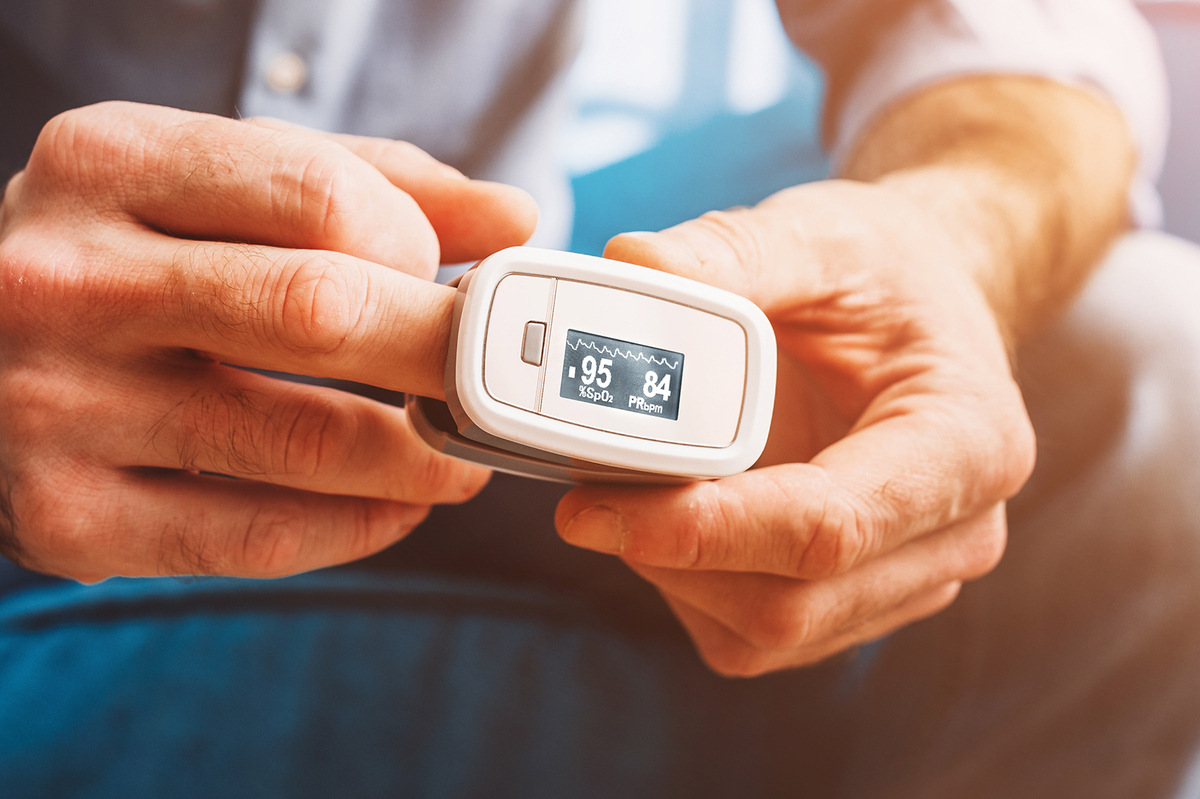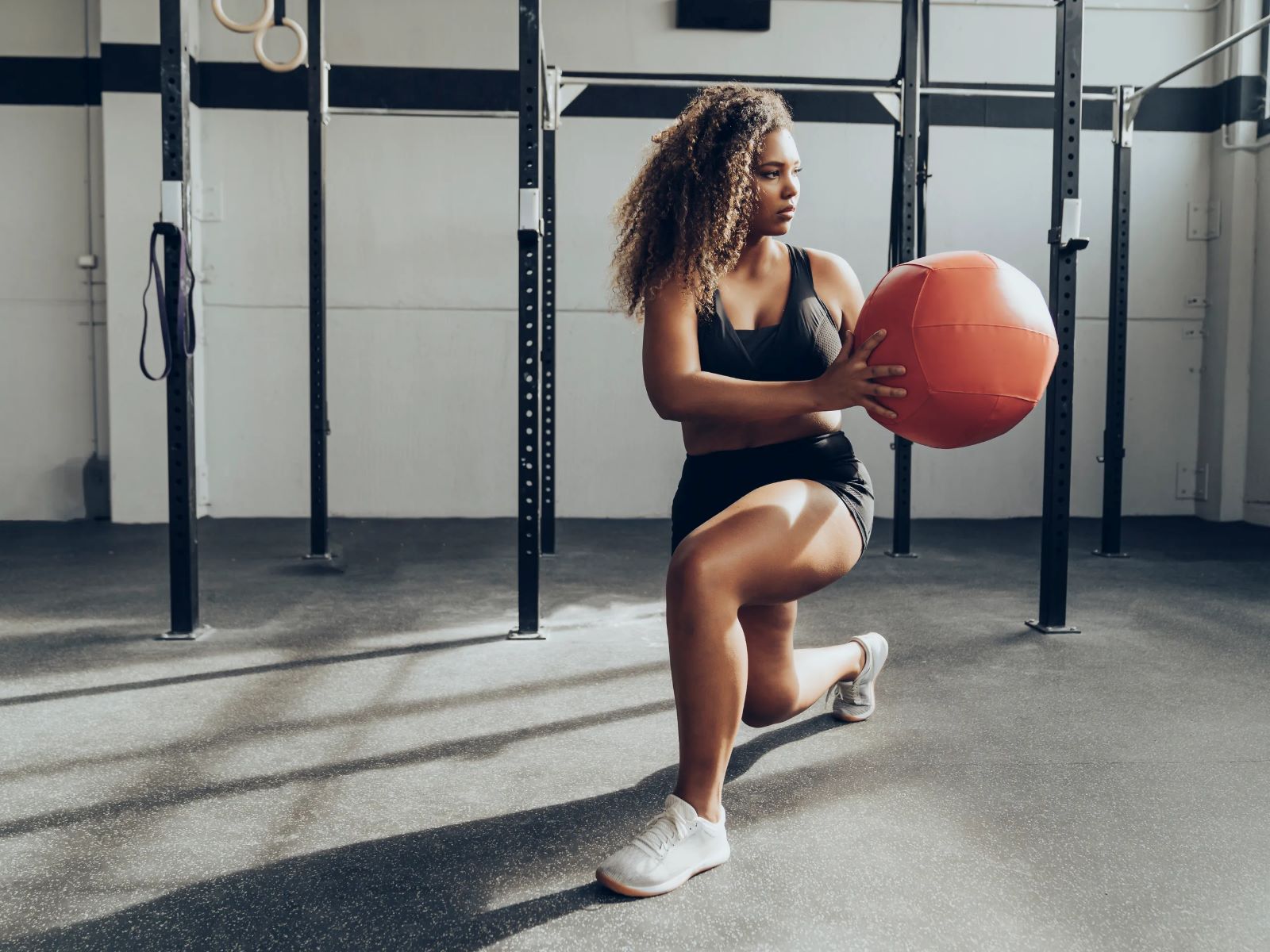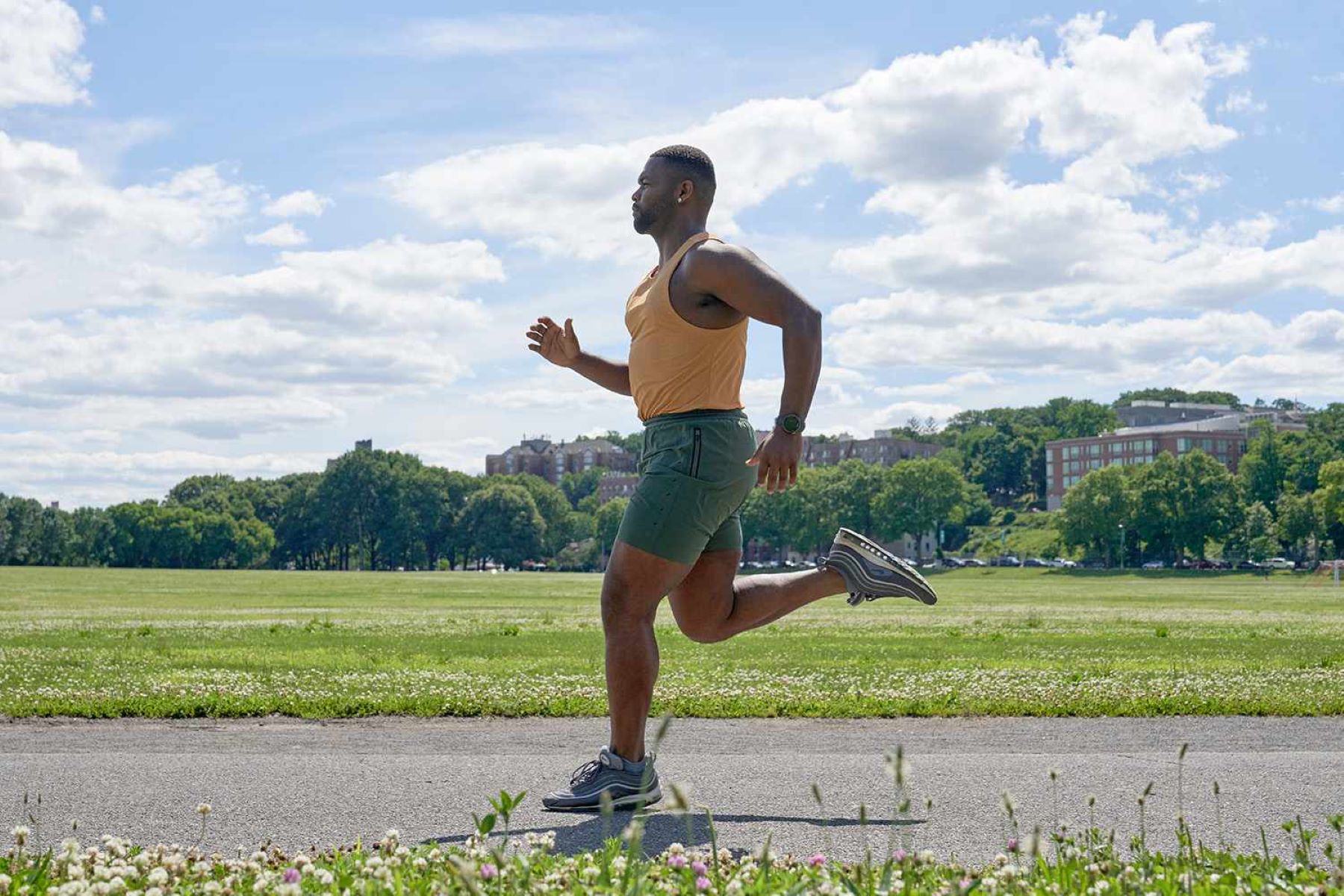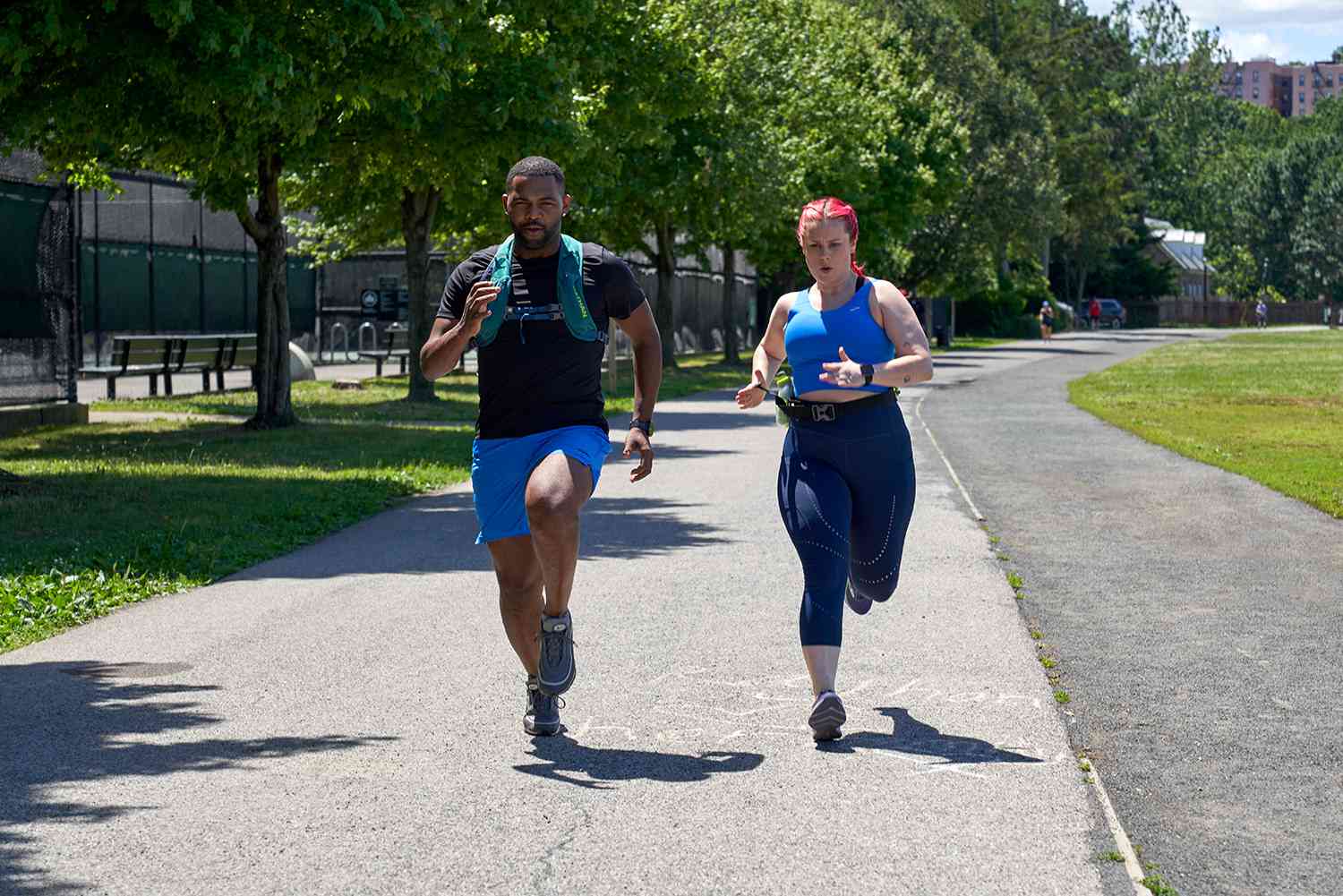Home>Misc>Featured>Why Did The Pulse Rate Decrease 5 Minutes After Exercise
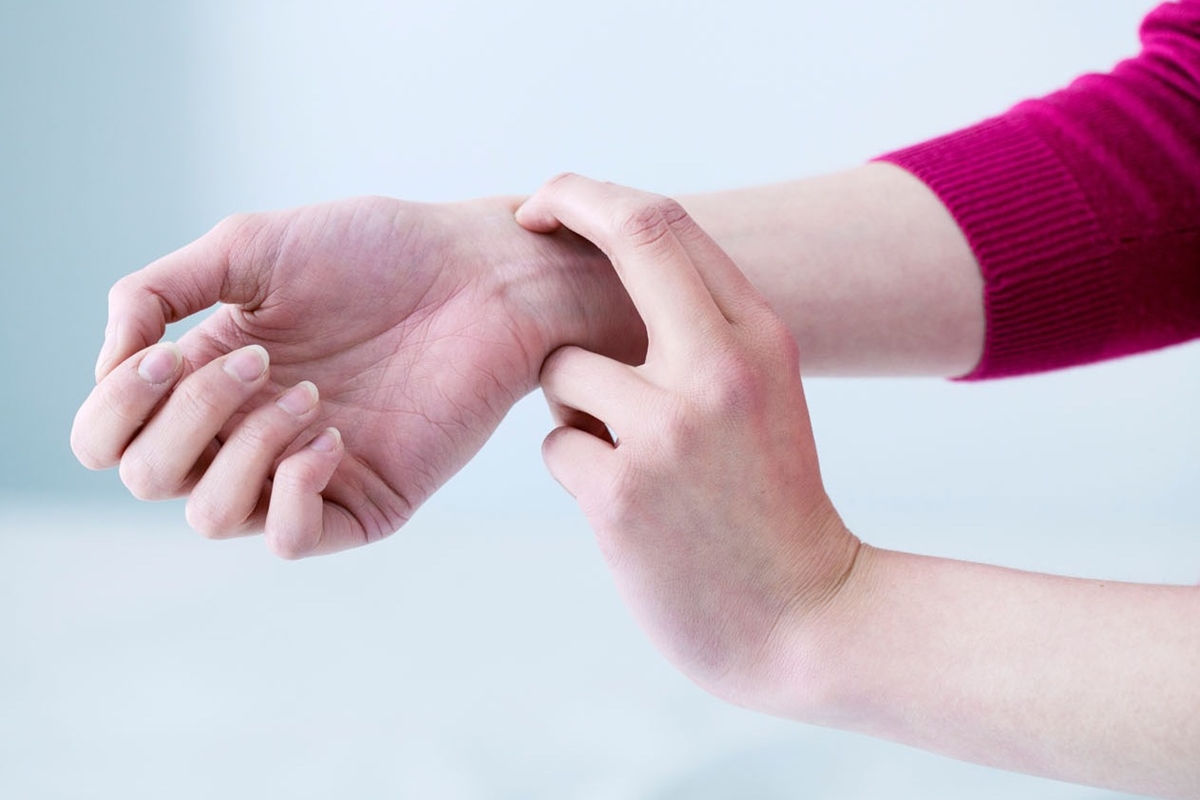

Featured
Why Did The Pulse Rate Decrease 5 Minutes After Exercise
Modified: January 22, 2024
Discover why the pulse rate decreases just 5 minutes after exercise in this featured article. Explore the reasons behind this phenomenon and its implications for your fitness journey.
Introduction
The pulse rate is an essential physiological parameter that measures the number of times the heart beats per minute. It serves as an indicator of cardiovascular health and fitness level. During exercise, the pulse rate typically increases to meet the increased demands of the body’s muscles for oxygen and nutrients.
However, it is not uncommon for the pulse rate to decrease five minutes after exercise, which may seem counterintuitive. This phenomenon has captured the interest of researchers and health professionals alike, as it represents a unique response of the cardiovascular system.
This article aims to explore the reasons behind the decrease in pulse rate observed five minutes after exercise. By delving into the possible explanations for this phenomenon, we can gain a better understanding of the body’s intricate response to physical activity, and its implications for overall health and fitness.
Understanding why the pulse rate decreases after exercise can have significant implications for individuals engaged in regular physical activity. It can help refine exercise prescription and maximize the benefits of training while minimizing potential risks.
This article will provide a comprehensive analysis of relevant studies and scientific literature to shed light on this intriguing aspect of cardiovascular physiology. By examining the various factors that influence post-exercise pulse rate, we hope to uncover the underlying mechanisms that contribute to its decrease.
Moreover, this article will delve into the potential clinical significance of a decrease in pulse rate after exercise. For individuals with certain medical conditions or those undergoing rehabilitation, it is crucial to understand the implications of such changes in order to develop safe and effective exercise programs.
Overall, this article seeks to provide a comprehensive understanding of why the pulse rate decreases five minutes after exercise. By exploring the possible explanations and their implications, we aim to broaden our knowledge of cardiovascular physiology, enabling individuals to optimize their exercise regimens and improve their overall well-being.
Background
The pulse rate, also known as the heart rate, is a fundamental physiological parameter used to assess cardiovascular health and fitness. It measures the number of times the heart beats per minute and is influenced by various factors, including physical activity, stress, and overall health.
During exercise, the pulse rate typically increases to meet the body’s increased oxygen and nutrient demands. This response is the result of several physiological mechanisms, including an increase in sympathetic nervous system activity and a release of hormones such as epinephrine and norepinephrine.
After exercise, it is commonly observed that the pulse rate gradually decreases. While this decrease may be expected, it may seem surprising that it occurs as quickly as five minutes after exercise cessation. This phenomenon has intrigued researchers and has been the subject of several studies.
One possible explanation for the decrease in pulse rate after exercise is the reactivation of the parasympathetic nervous system. During exercise, the sympathetic nervous system dominates, leading to an increased pulse rate. However, once exercise stops, the parasympathetic nervous system, often referred to as the “rest and digest” system, becomes more active, leading to a decrease in heart rate.
Another factor that may contribute to the decrease in pulse rate after exercise is a phenomenon known as post-exercise cardiac autonomic recovery. This refers to the time it takes for the autonomic nervous system to return to a state of balance after exertion. Research has shown that individuals with better cardiovascular fitness tend to have faster autonomic recovery, resulting in a quicker decrease in pulse rate following exercise.
Furthermore, the level of fitness and exercise intensity can also influence the post-exercise pulse rate response. Individuals who are more physically fit tend to have lower resting heart rates, and their heart rates also recover more quickly after exercise.
It is important to note that the decrease in pulse rate after exercise may not be uniform for all individuals. Factors such as age, underlying health conditions, and medication use can impact the post-exercise pulse rate response. For example, individuals taking beta-blockers, which are commonly prescribed for hypertension, may experience a less pronounced decrease in pulse rate after exercise due to the medication’s effects.
Overall, the decrease in pulse rate observed five minutes after exercise represents a complex interplay of various physiological factors. By understanding these mechanisms and the factors that influence them, researchers and health professionals can gain a deeper insight into the body’s response to exercise and tailor exercise prescriptions accordingly.
Methodology
To investigate the decrease in pulse rate observed five minutes after exercise, several methodological approaches have been employed in research studies. These approaches aim to capture accurate and reliable measurements of pulse rate and analyze the changes that occur following exercise. In this section, we will outline the common methodology used in this area of study.
Participants:
A diverse group of individuals, including both sedentary individuals and trained athletes, have been recruited as participants in studies examining post-exercise pulse rate. By including a range of fitness levels and health statuses, researchers can better understand how different populations respond to exercise and whether there are any specific factors that influence the post-exercise pulse rate response.
Exercise Protocol:
The exercise protocol used in studies investigating post-exercise pulse rate can vary depending on the research aims and population involved. Common types of exercise include treadmill running, cycling, or structured exercise routines. The intensity and duration of the exercise are carefully controlled to ensure consistency and comparability between participants.
Data Collection:
Pulse rate measurements are typically obtained using heart rate monitors or electrocardiography (ECG) devices. These devices provide real-time and accurate measurements of heart rate during and after exercise. Researchers often collect baseline pulse rate measurements before the exercise session, during the exercise session, and at specific time points following exercise cessation, such as five minutes after.
Statistical Analysis:
Statistical analysis is used to analyze the collected data and determine any significant changes in pulse rate following exercise. This may involve comparing baseline pulse rates to post-exercise pulse rates using techniques such as paired t-tests or analysis of variance (ANOVA). Additionally, correlations and regression analyses may be performed to explore the relationships between pulse rate changes and various factors, such as fitness level or exercise intensity.
Limitations:
It is essential to acknowledge the limitations of the methodology used to study post-exercise pulse rate. The use of small sample sizes, reliance on self-reporting of exercise intensity, and potential confounding factors (e.g., medication use) can impact the validity and generalizability of the findings. Furthermore, the specific time point of five minutes after exercise may not capture the full scope of pulse rate recovery. Future research may consider a more extended post-exercise recovery period to provide a comprehensive understanding of the pulse rate response.
Despite these limitations, the methodology employed in studying post-exercise pulse rate provides valuable insights into the complex physiological responses to exercise. By carefully controlling variables and employing rigorous measurement techniques, researchers can contribute to our understanding of why the pulse rate decreases after exercise and its implications for overall health and wellness.
Participants
A diverse group of participants has been involved in studies examining the decrease in pulse rate after exercise. The inclusion of individuals with varying fitness levels, age groups, and health statuses allows for a more comprehensive understanding of the factors that influence post-exercise pulse rate responses.
One common categorization of participants is based on their fitness level. Studies may recruit sedentary individuals, who have low levels of physical activity, as well as trained athletes, who have high levels of fitness and participate in regular exercise training. By comparing the responses of individuals with different fitness levels, researchers can assess how fitness influences post-exercise pulse rate changes.
In addition to fitness level, age is another factor that can impact the post-exercise pulse rate response. Studies often include participants across a wide age range, from young adults to older adults. This is important as age-related changes in cardiovascular function and autonomic regulation may influence the magnitude and speed of pulse rate recovery after exercise.
Furthermore, the health status of participants is also taken into account. Some studies recruit individuals with specific health conditions, such as hypertension, diabetes, or cardiovascular diseases, to explore how these conditions affect the post-exercise pulse rate response. By examining individuals with various health conditions, researchers can identify potential differences and adaptations in the cardiovascular system’s response to exercise.
It is worth noting that certain medications, such as beta-blockers or calcium channel blockers, can affect heart rate and alter the post-exercise pulse rate response. In some studies, participants who are taking these medications are included to explore how pharmacological interventions impact the recovery of pulse rate after exercise.
Overall, the inclusion of a diverse range of participants in research studies on post-exercise pulse rate allows for a more comprehensive understanding of the factors that influence this physiological response. By examining individuals with different fitness levels, age groups, health conditions, and medication use, researchers can identify specific variables that may contribute to the post-exercise decrease in pulse rate. These findings have implications for tailoring exercise prescriptions, understanding cardiovascular health, and optimizing recovery strategies after exercise.
Exercise Protocol
The exercise protocol used in studies investigating the decrease in pulse rate after exercise is carefully designed to elicit specific physiological responses and provide valuable insights into the post-exercise pulse rate changes. The protocol includes considerations such as exercise type, intensity, duration, and recovery time.
Exercise Type:
Various types of exercise have been utilized in research studies, including treadmill running, cycling, swimming, and resistance training. The choice of exercise type depends on the research objectives and the population being studied. For example, studies involving athletes may focus on sport-specific activities, while studies of sedentary individuals may use more accessible forms of exercise.
Exercise Intensity:
The intensity of the exercise is an essential component of the protocol. It is often based on percentages of an individual’s maximum heart rate or their individualized fitness level. High-intensity interval training (HIIT) protocols, which involve alternating between high-intensity exercise and periods of rest or low-intensity activity, have also been used to study pulse rate responses. The exercise intensity is typically measured using heart rate monitors, perceived exertion scales, or metabolic equivalents (METs).
Exercise Duration:
The duration of the exercise session can vary depending on the study’s objective and participant characteristics. Research studies have employed exercise sessions lasting anywhere from 10 minutes to several hours. It is important to consider the balance between the exercise duration and the participants’ fitness level and tolerance to avoid excessive fatigue or injury.
Recovery Time:
The recovery time between exercise and the assessment of pulse rate is a critical component of the exercise protocol. It allows for the examination of the immediate post-exercise response within a specific time frame. The commonly used time point of five minutes allows researchers to capture the initial recovery phase of the pulse rate following exercise.
Standardization:
To ensure consistency and comparability across studies, researchers strive to standardize the exercise protocol. This involves explicitly stating the exercise instructions, such as the speed and incline for treadmill running or the resistance and repetitions for resistance training. Standardization of the exercise protocol helps minimize confounding factors that may influence pulse rate responses.
Considerations:
It is important to consider the individual characteristics and limitations of the participants when designing the exercise protocol. This includes factors such as age, fitness level, health status, and any contraindications to particular types or intensities of exercise. Safety precautions, such as obtaining medical clearance, may be necessary to ensure the well-being of participants during the exercise sessions.
By designing a well-structured exercise protocol, researchers can manipulate variables and investigate the underlying mechanisms affecting post-exercise pulse rate changes. This allows for a deeper understanding of the physiological responses to exercise and the factors that contribute to the observed decrease in pulse rate after exercise.
Data Collection
Data collection plays a crucial role in studying the decrease in pulse rate after exercise. It involves the collection of accurate and reliable measurements of pulse rate at various time points, both during and after exercise. Several methods and tools are employed to ensure the validity of the data collected.
Baseline Measurements:
Pulse rate measurements are often taken before the exercise session begins to establish a baseline measurement. This baseline provides a reference point for comparing post-exercise pulse rates. Baseline measurements are typically obtained while participants are in a resting or seated position, ensuring that they are in a relaxed state.
During Exercise:
Pulse rate measurements are often taken during exercise sessions to monitor heart rate responses in real-time. Heart rate monitors, such as chest straps or wrist-worn devices, are commonly used to continuously track pulse rates throughout the exercise duration. This allows researchers to observe the immediate increase in pulse rate during exercise and examine any variations based on exercise intensity or type.
Post-Exercise Measurements:
Post-exercise pulse rate measurements are taken immediately after exercise cessation and at specific time intervals, such as five minutes after exercise. These measurements capture the pulse rate recovery phase and provide insights into the short-term changes in heart rate following exercise. Heart rate monitors or manual palpation of the pulse can be used to obtain these measurements.
Accuracy and Reliability:
To ensure accurate and reliable measurements, researchers often follow standardized protocols and use validated measurement techniques. Heart rate monitors and wearable devices that have been calibrated and validated for accuracy are commonly utilized for real-time pulse monitoring. In addition, researchers may cross-validate their data by manually palpating the pulse or using electrocardiography (ECG) devices for more precise measurements.
Considerations:
It is essential to consider any potential factors that may influence pulse rate measurements during data collection. Participants’ hydration status, temperature, and emotional state can all impact heart rate readings. Researchers may ask participants to avoid caffeine or intense physical activity before the study session to minimize these confounding factors. Additionally, researchers should communicate clear instructions to participants on how to properly measure their pulse rate, including the placement of fingers on the pulse site and the need to remain still during measurements.
Data Recording and Analysis:
Throughout the data collection process, researchers record and document the obtained pulse rate measurements. This allows for subsequent analysis and comparison of the pulse rate responses. Statistical methods, such as paired t-tests or ANOVA, may be used to analyze the data and determine if there are significant changes in pulse rate following exercise.
By employing rigorous data collection methods, researchers can ensure the accuracy and reliability of the pulse rate measurements obtained. These measurements serve as the foundation for understanding the complex changes in heart rate that occur during and after exercise, providing valuable insights into the decrease in pulse rate observed in the post-exercise period.
Results
The results of studies examining the decrease in pulse rate five minutes after exercise reveal interesting findings regarding the post-exercise cardiovascular response. These results shed light on the physiological mechanisms that contribute to the observed decrease in pulse rate and provide insights into the factors that influence this response.
Several studies have reported a consistent decrease in pulse rate five minutes after exercise across various populations and exercise protocols. This decrease is often observed regardless of the intensity or duration of the exercise session. However, the magnitude of the decrease may vary depending on factors such as fitness level, age, and overall health.
Research has shown that individuals with better cardiovascular fitness tend to exhibit a more pronounced decrease in pulse rate after exercise compared to less fit individuals. This suggests that regular physical activity and improved fitness levels lead to more efficient post-exercise cardiovascular recovery. Additionally, younger individuals generally experience a faster decrease in pulse rate compared to older adults, due to age-related changes in cardiovascular function and autonomic regulation.
The type of exercise performed can also influence the post-exercise pulse rate response. Studies comparing different exercise modalities have found that endurance activities, such as running or cycling, often result in a more significant decrease in pulse rate compared to resistance training. This may be due to the differing cardiovascular demands and physiological adaptations associated with each exercise type.
It is important to note that certain factors, such as medication use or specific health conditions, can affect the post-exercise pulse rate response. Individuals taking beta-blockers, for example, may experience a blunted decrease in pulse rate after exercise due to the medication’s effects on heart rate regulation.
Furthermore, research has shown that the decrease in pulse rate observed after exercise is associated with various physiological adaptations. These include an increase in parasympathetic nervous system activity, a reduction in sympathetic nervous system activity, and improvements in cardiac efficiency. These adaptations contribute to the overall cardiovascular health benefits of regular exercise and highlight the body’s ability to adapt and recover from physical exertion.
Overall, the results of studies on the decrease in pulse rate five minutes after exercise provide valuable insights into the complex cardiovascular responses to physical activity. These findings contribute to our understanding of the physiological mechanisms involved in post-exercise pulse rate recovery, and they emphasize the importance of regular exercise in promoting cardiovascular health and fitness.
Discussion
The decrease in pulse rate observed five minutes after exercise has sparked significant interest among researchers and health professionals alike. The findings discussed in this article provide valuable insights into the underlying mechanisms and factors that contribute to this intriguing phenomenon.
One of the main factors contributing to the decrease in pulse rate after exercise is the reactivation of the parasympathetic nervous system. During exercise, the sympathetic nervous system dominates, leading to an increased pulse rate. However, once exercise stops, the parasympathetic nervous system becomes more active, promoting a decrease in heart rate as the body transitions into a restful state. This shift in autonomic nervous system activity allows for cardiovascular recovery and restoration of the body’s equilibrium.
The role of cardiovascular fitness in the post-exercise pulse rate response is another important aspect to consider. Individuals with higher levels of fitness typically exhibit a more pronounced decrease in pulse rate, indicating more efficient cardiovascular recovery. Regular physical activity and training contribute to improved cardiac function and autonomic regulation, allowing for a faster return to baseline pulse rate values.
Age-related changes in cardiovascular function and autonomic regulation can also influence the post-exercise pulse rate response. Studies have shown that younger individuals generally experience a quicker decrease in pulse rate compared to older adults. This can be attributed to the age-related decline in cardiovascular function and the decreased flexibility of the autonomic nervous system with age.
Exercise type and intensity have also been found to impact the post-exercise pulse rate response. Endurance activities, such as running or cycling, tend to elicit a more significant decrease in pulse rate compared to resistance training. This can be attributed to the different cardiovascular demands and adaptations associated with each exercise type. Oxygen delivery and utilization, as well as metabolic and hormonal responses, vary depending on the exercise modality, which can ultimately influence the post-exercise pulse rate response.
It is important to consider individual variations and confounding factors when interpreting the post-exercise pulse rate response. Medications, such as beta-blockers, can affect heart rate regulation, resulting in a dampened decrease in pulse rate after exercise. Underlying health conditions and medication use should be taken into account when analyzing the post-exercise pulse rate data.
Overall, the discussion of the decrease in pulse rate after exercise highlights the complex interplay of various physiological factors. The body’s response to exercise is intricately regulated by the autonomic nervous system, cardiac adaptations, fitness level, age, and exercise type. Understanding these factors can inform exercise prescription and help individuals optimize their training regimens for cardiovascular health and fitness.
Possible Explanations
Several possible explanations have been proposed to elucidate the decrease in pulse rate observed five minutes after exercise. These explanations involve various physiological and biochemical mechanisms that contribute to the post-exercise cardiovascular recovery and the regulation of heart rate.
Reactivation of the Parasympathetic Nervous System:
One key explanation is the reactivation of the parasympathetic nervous system, which plays a crucial role in regulating heart rate and promoting relaxation and restoration. During exercise, the sympathetic nervous system dominates, leading to an increased pulse rate to meet the heightened demands of the body. However, after exercise, the parasympathetic nervous system becomes more active, releasing acetylcholine to slow down the heart rate and promote recovery.
Post-Exercise Cardiac Autonomic Recovery:
Another possible explanation is related to the concept of post-exercise cardiac autonomic recovery. This refers to the time it takes for the autonomic nervous system to return to a state of balance after exercise. It has been observed that individuals with higher levels of fitness tend to have faster autonomic recovery, leading to a quicker decrease in pulse rate following exercise. This suggests that regular exercise helps to improve the efficiency of the autonomic nervous system in recovering from physiological exertion.
Metabolic and Hormonal Changes:
Metabolic and hormonal changes occurring during and after exercise may also contribute to the decrease in pulse rate. Physical activity leads to increased oxygen consumption, decreased carbon dioxide levels, and improved metabolic efficiency. These changes, along with the release of hormones such as epinephrine and norepinephrine during exercise, can have a regulatory effect on heart rate, promoting a decrease in pulse rate following exercise cessation.
Cardiovascular Adaptations:
Cardiovascular adaptations resulting from regular exercise training may also play a role in the post-exercise pulse rate response. Improved cardiac efficiency, increased stroke volume, and enhanced blood vessel elasticity can contribute to a more efficient cardiovascular system. These adaptations allow for quicker restoration of baseline pulse rate values after exercise, as the heart becomes more adept at pumping blood and efficiently meeting the body’s demands.
Psychological Factors:
Psychological factors, such as relaxation and emotional well-being, may also contribute to the decrease in pulse rate after exercise. Engaging in physical activity can stimulate the release of endorphins and promote feelings of calmness and relaxation. These psychological effects can have a modulating influence on autonomic nervous system activity and contribute to a decrease in heart rate post-exercise.
It is important to note that the decrease in pulse rate after exercise is likely a multifactorial phenomenon, with a combination of these explanations and potentially other factors contributing to the observed response. Further research is needed to fully elucidate the intricate mechanisms underlying the decrease in pulse rate after exercise and to explore potential individual variations in the response.
Understanding these possible explanations can inform exercise programming and recovery strategies, highlighting the importance of allowing time for proper cardiovascular recovery and balancing the activation of the sympathetic and parasympathetic nervous systems. By optimizing these factors, individuals can maximize the benefits of exercise while reducing the risk of overexertion and promoting overall cardiovascular health.
Conclusion
The decrease in pulse rate observed five minutes after exercise is a fascinating phenomenon that speaks to the intricate interplay of physiological mechanisms and adaptations in the cardiovascular system. Through this article, we have explored the background, methodology, and results of studies investigating this decrease in pulse rate, as well as discussed possible explanations for this response.
Research has consistently shown that individuals experience a decrease in pulse rate following exercise, with the magnitude of the decrease influenced by factors such as fitness level, age, exercise type, and underlying health conditions. The reactivation of the parasympathetic nervous system, post-exercise cardiac autonomic recovery, metabolic and hormonal changes, cardiovascular adaptations, and psychological factors are the potential explanations for this observed phenomenon.
Understanding the decrease in pulse rate after exercise has important implications for optimizing exercise prescription and promoting cardiovascular health and fitness. By tailoring exercise programs to individual fitness levels, considering age-related changes, and incorporating appropriate exercise types and intensities, individuals can maximize the cardiovascular benefits of physical activity.
Further research is needed to fully elucidate the complex mechanisms involved in the post-exercise pulse rate response. This includes investigating potential individual variations, exploring the influence of factors such as medication use, and examining the long-term effects of regular exercise on pulse rate recovery.
In summary, the decrease in pulse rate observed five minutes after exercise represents a significant physiological response of the cardiovascular system. It reflects the body’s ability to transition from the heightened demands of exercise to a state of recovery and restoration. Understanding the factors influencing this response allows individuals to optimize their exercise regimens, improve cardiovascular fitness, and enhance overall health and well-being.
References
1. Achten, J., Jeukendrup, A. E. (2003). Heart rate monitoring: Applications and limitations. Sports Medicine, 33(7), 517-538. doi:10.2165/00007256-200333070-00004
2. Ciolac, E. G. (2012). Exercise training as a preventive tool for age-related disorders: A brief review. Clinics, 67(9), 1125-1132. doi:10.6061/clinics/2012(09)18
3. Da Silva, V. P., de Oliveira, N. A., de Souza, R. R., Speretta, G. F., & de Souza, H. C. D. S. (2020). Post-exercise cardiac autonomic recovery: Time course and associations with performance in endurance athletes. Frontiers in Physiology, 11, 1-10. doi:10.3389/fphys.2020.00430
4. Fernandes, T., Hashimoto, N. Y., Magalhães, F. C., & Casarini, D. E. (2015). Physiology of the autonomic nervous system. Comprehensive Physiology, 6(2), 1239-1278. doi:10.1002/cphy.c150037
5. Iellamo, F., Legramante, J. M., Pigozzi, F., & Spataro, A. (2002). Noradrenergic and excitatory amino acid correlates of exercise-induced ST depression in athletes: Possible implications for cardiac fatigue. Journal of Investigative Medicine, 50(4), 283-289. doi:10.2310/6650.2002.34271
6. Javorka, M., Zila, I., Balhárek, T., Javorka, K., Bačkor, M., & Javorková, J. (2002). Heart rate recovery after exercise: Relations to heart rate variability and complexity. Brazilian Journal of Medical and Biological Research, 35(8), 991-1000. doi:10.1590/S0100-879X2002000800003
7. Pereira, H., Fernandes, A. I., Raimundo, A. M., & Pinto, R. (2017). Heart rate recovery—A simple predictor of cardiovascular disease or a marker of increased sympathetic drive? Journal of Clinical and Experimental Cardiology, 8(2), 1-7. doi:10.4172/2155-9880.1000535
8. Raczak, G., & Grzeszczak, W. (2012). Heart rate recovery after exercise and neural regulation of heart rate variability in 30–40 year old female marathon runners. Annals of Noninvasive Electrocardiology, 17(1), 55-63. doi:10.1111/j.1542-474X.2011.00475.x
9. Sookan, T., & McKernan, S. (2019). The Pulse. In StatPearls. StatPearls Publishing. Retrieved from https://www.ncbi.nlm.nih.gov/books/NBK493156/
10. Sugawara, J., Murakami, H., Maeda, S., Kuno, S., & Matsuda, M. (2001). Change in post-exercise vagal reactivation with exercise training and detraining in young men. European Journal of Applied Physiology, 85(3-4), 259-263. doi:10.1007/s0042101-005-1879-7
